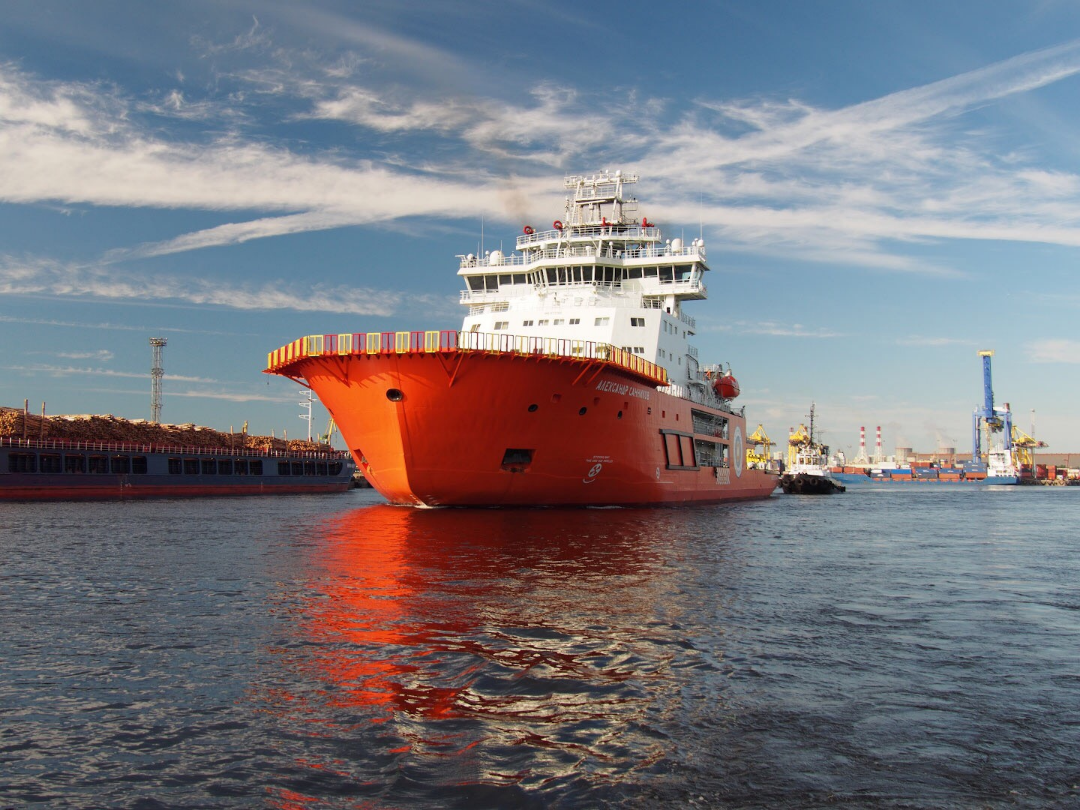News
Solemn ceremony of raising the National Flag was held on the icebreaking support vessel Alexander Sannikov on June, 29

The icebreaker built by Vyborg Shipyard (part of United Shipbuilding Corporation) by order of Gazprom Neft will escort tankers from the Novoportovskoye field along the Northern Sea Route. The new vessel will provide year-round supplies of Arctic oil to the world market.
Alexander Sannikov has become the first icebreaker built under the Time of the Arctic program. Within this program 6 tankers for oil transportation from the Novoportovskoye field have already been launched and they are in operation. The new icebreaker will start regular escorting of the tankers from July. At the same time, Gazprom Neft will continue to invest in the development of infrastructure on the Yamal Peninsula in the Novy Port area in order to maximize the efficiency of all types of hydrocarbons production on the peninsula. In this regard, Gazprom Neft places stake on the construction of its own Arctic fleet.
“According to our forecasts, demand for transportation market on the Northern Sea Route will increase by one third by 2030. The development of own Arctic fleet will allow the company to maintain leadership in the Russian Arctic for the long term prospect. Following Alexander Sannikov, our second highly sophisticated icebreaker Andrey Vilkitsky is in a high degree of completion”, said Alexander Dyukov, Chairman of the Management Board of Gazprom Neft.
On the icebreaker Alexander Sannikov there were installed advanced systems of dynamic positioning and integral control. The vessel is designed to provide up to 40 days of autonomous operation at extreme temperatures of -500C. The onboard computers monitor the icebreaker life support, start the generators, synchronize the equipment, control the emergency modes, adjust temperature and operational conditions on all decks of the vessel. Digital control of the icebreaker improved the efficiency of the crew - in order to perform similar functions on the other icebreaking vessels it is required to increase the crew twofold.
In open water, Alexander Sannikov can move with a speed up to16 knots (25 km /h) and make a 360-degree turn within a minute. The vessel with capacity 22 MW shows icebreaking capability comparable to nuclear-powered icebreakers. Such advantages are provided by the special hull shape of Alexander Sannikov and three thrusters located in pair in the aft and one unit in the fore part of the vessel. Typical icebreakers run into the ice and break it with their weight. Alexander Sannikov cuts and mills the ice with its propellers that provides for high maneuverability of the vessel.
Own fire station, hospital, helideck, emergency-rescue boats, powerful winch and crane with capacity 26 tons - by its functionality Alexander Sannikov exceeds most of existing icebreakers. In addition to main purpose of escorting the tankers, the vessel can independently transport the cargo, provide tugging assistance and participate in rescue operations.
The most part of equipment installed on the icebreaker Alexander Sannikov was supplied by the Russian manufacturers. Zvezdochka Ship Repair Center (part of United Shipbuilding Corporation) in Severodvinsk equipped the vessel with the most advanced bow propulsion unit. Also domestic manufacturers provided the icebreaker with state-of-the-art navigation system, a bridge, generators - the most important equipment ensuring operation of the icebreaker.
REFERENCE:
The Novoportovskoye field is one of the largest oil and gas condensate fields on the Yamal Peninsula. It is located 30 km from the coast of the Gulf of Ob. Recoverable C1 and C2 reserves are estimated at more than 250 million tons of oil and condensate, as well as more than 320 billion cubic meters of gas.

